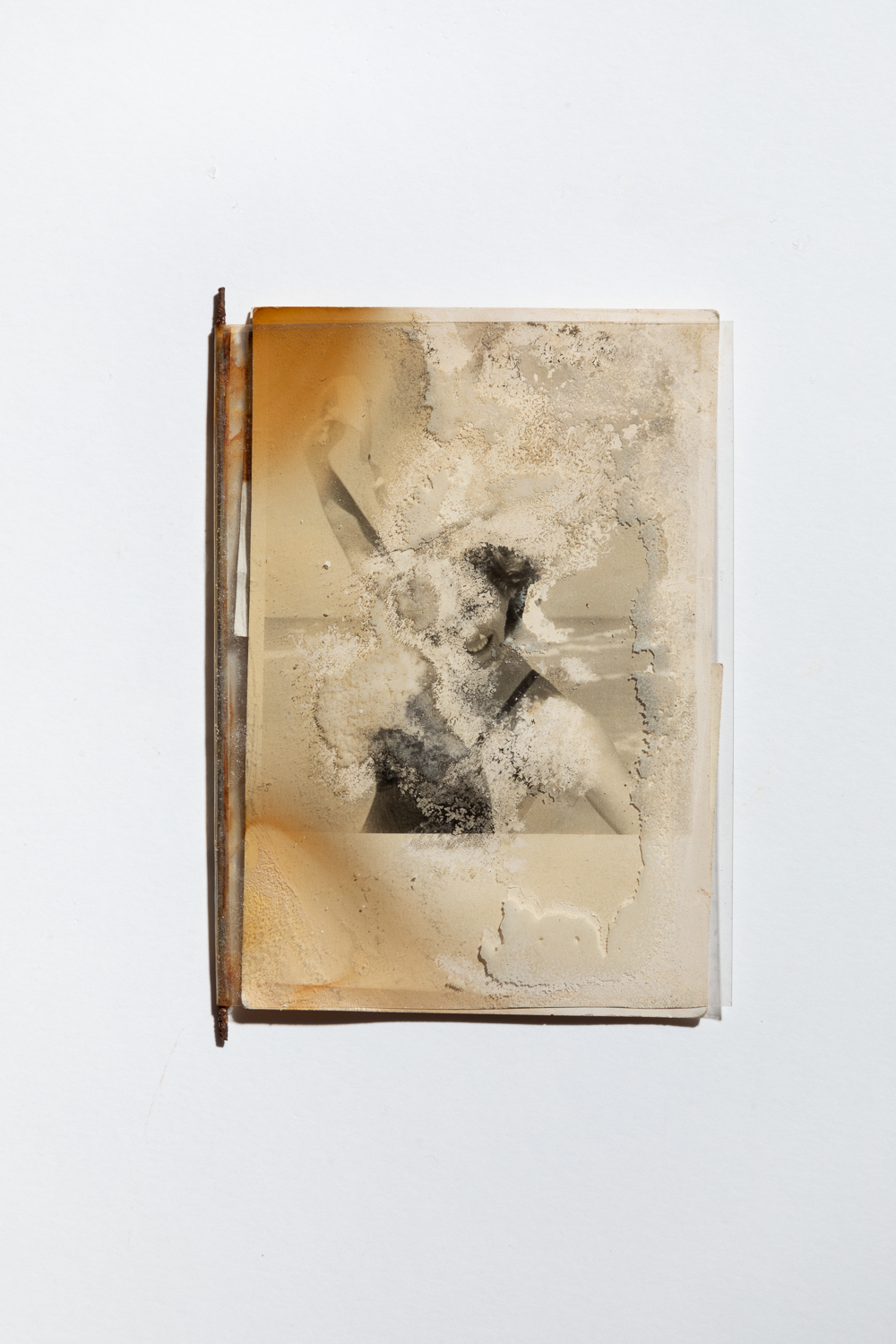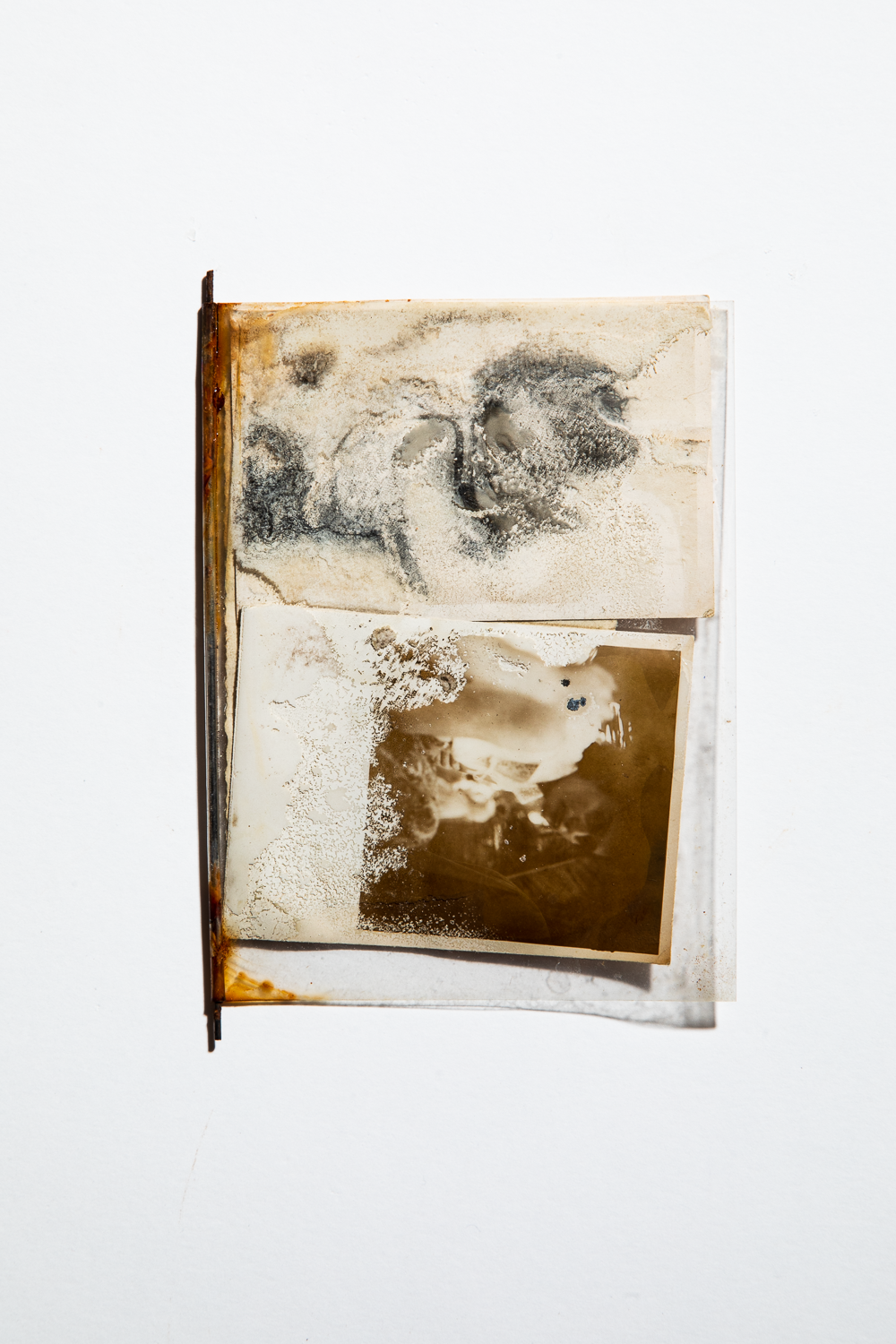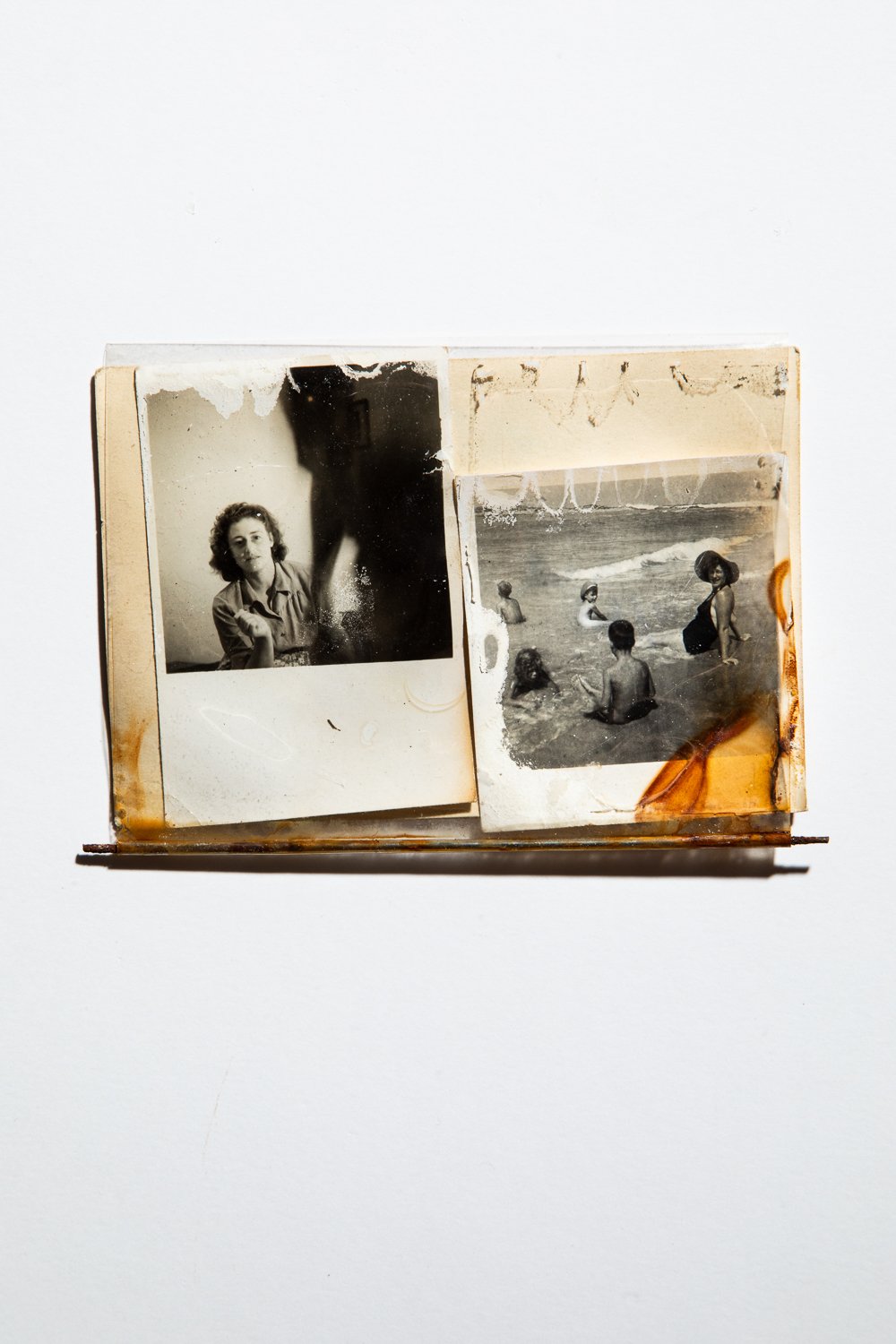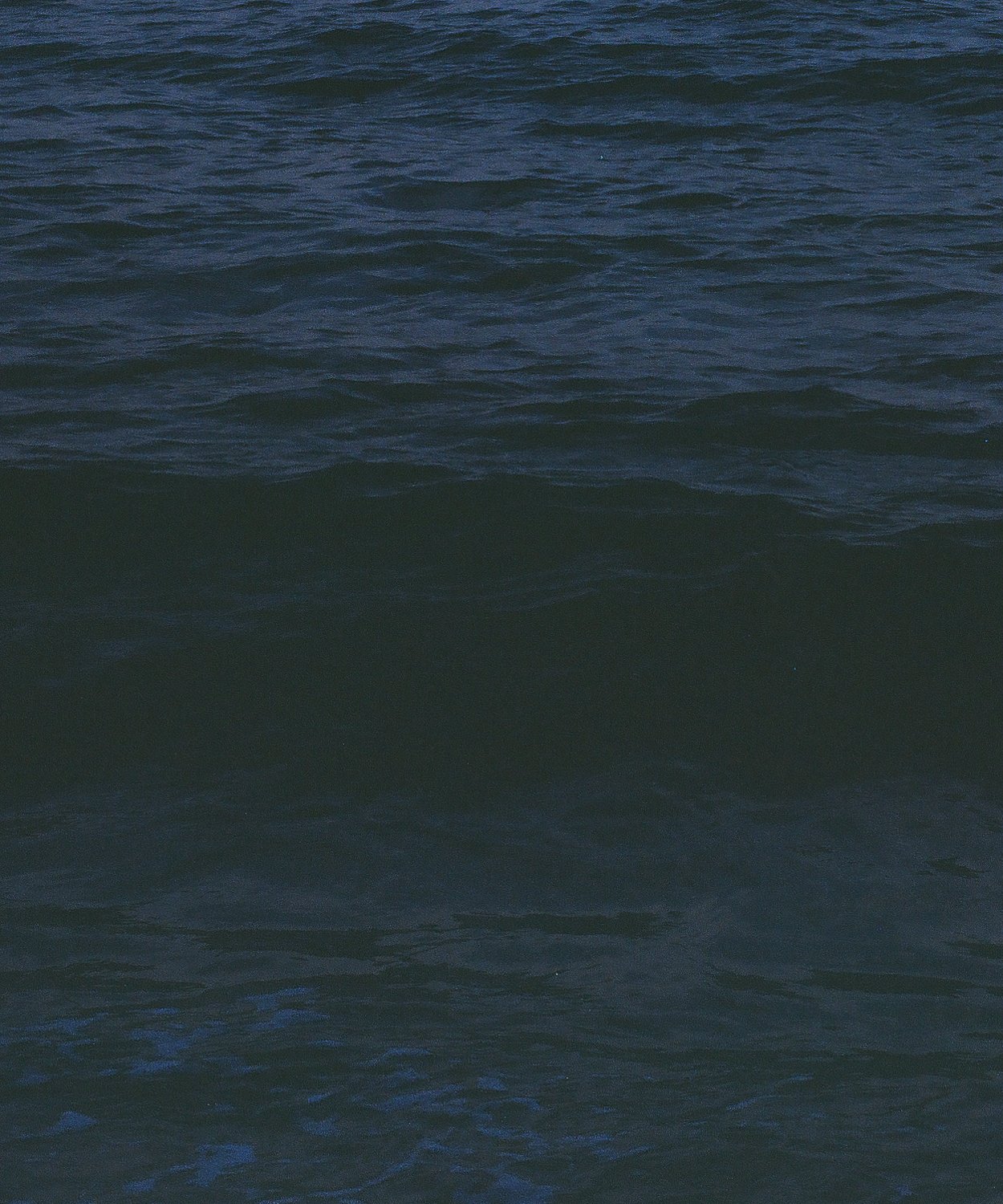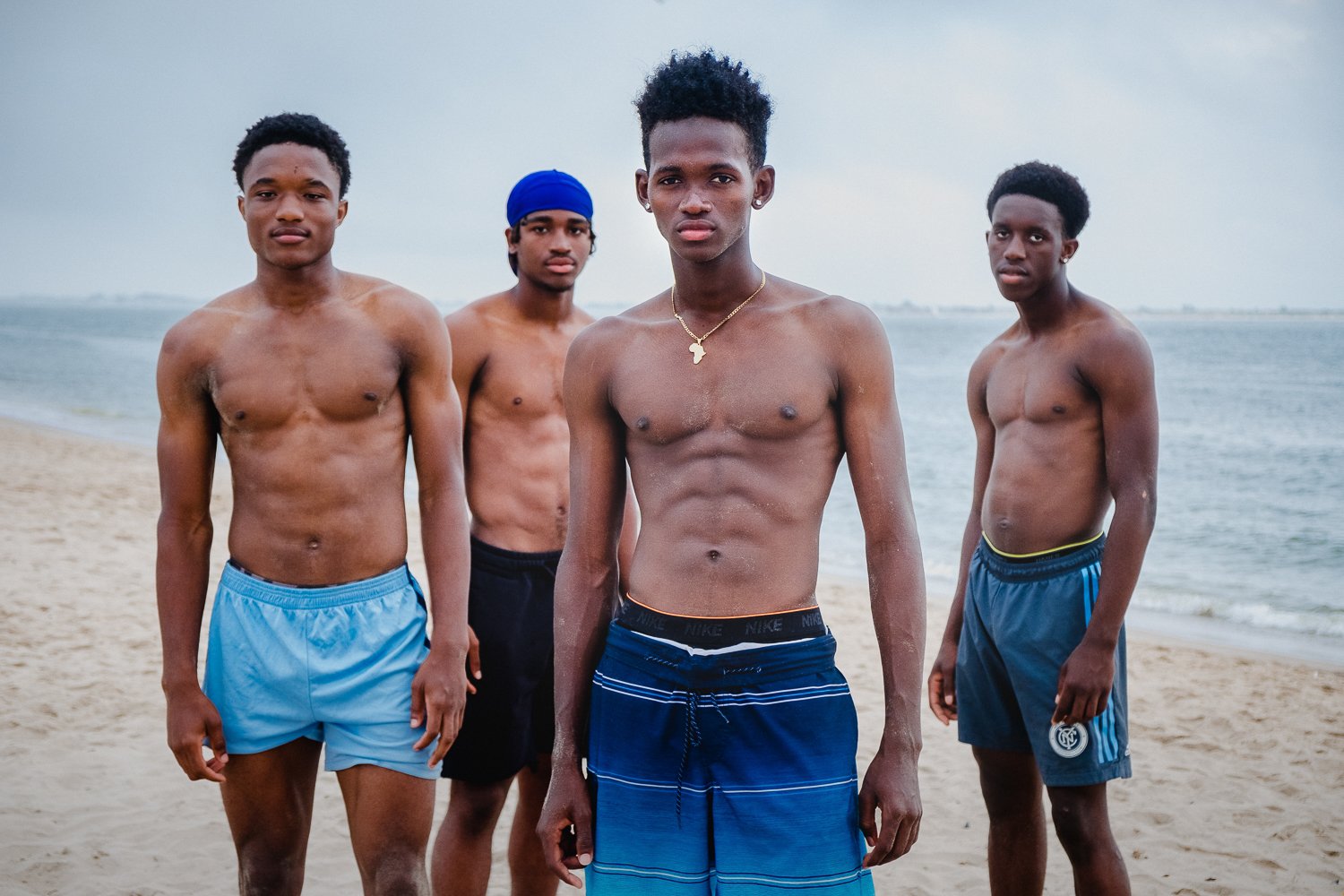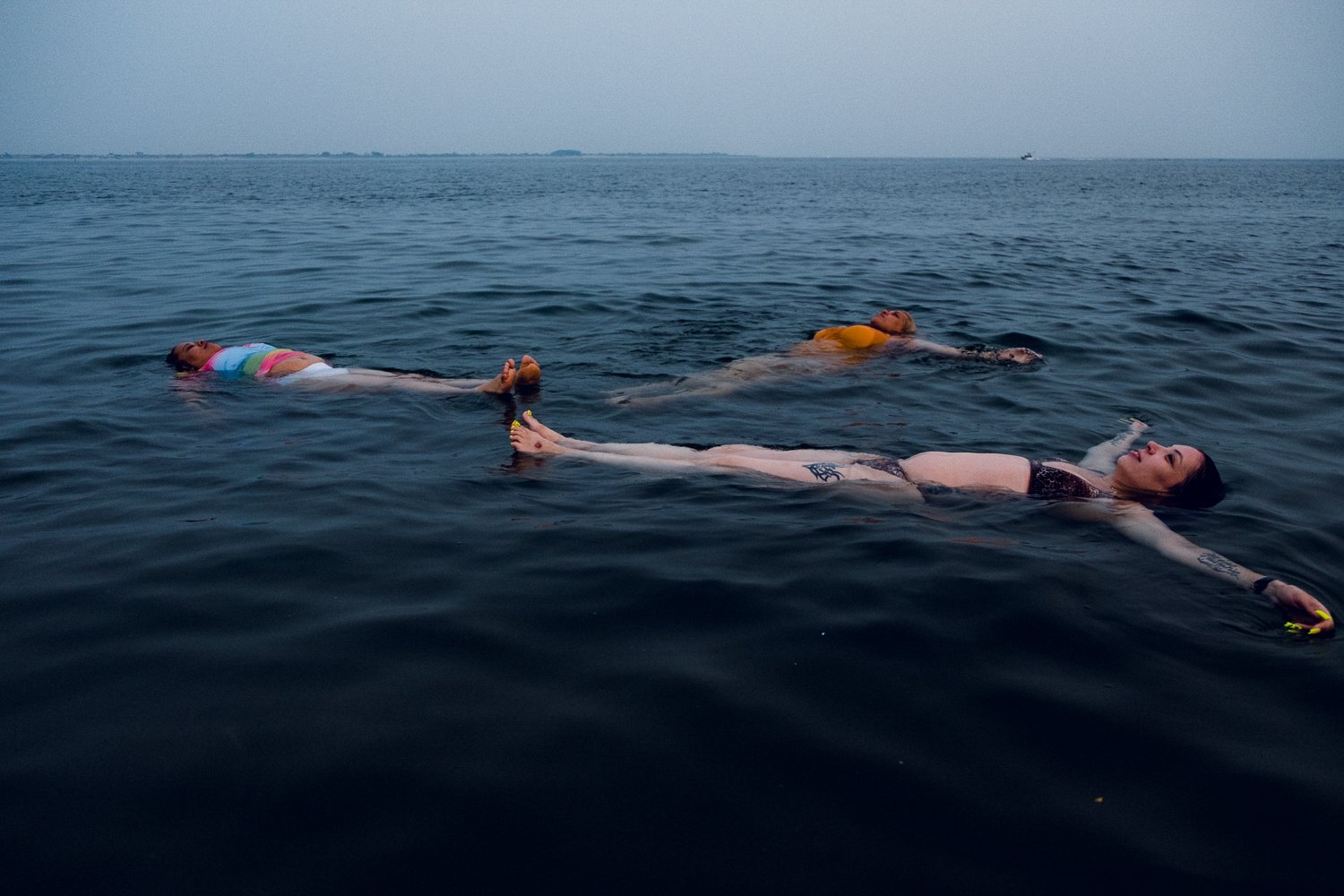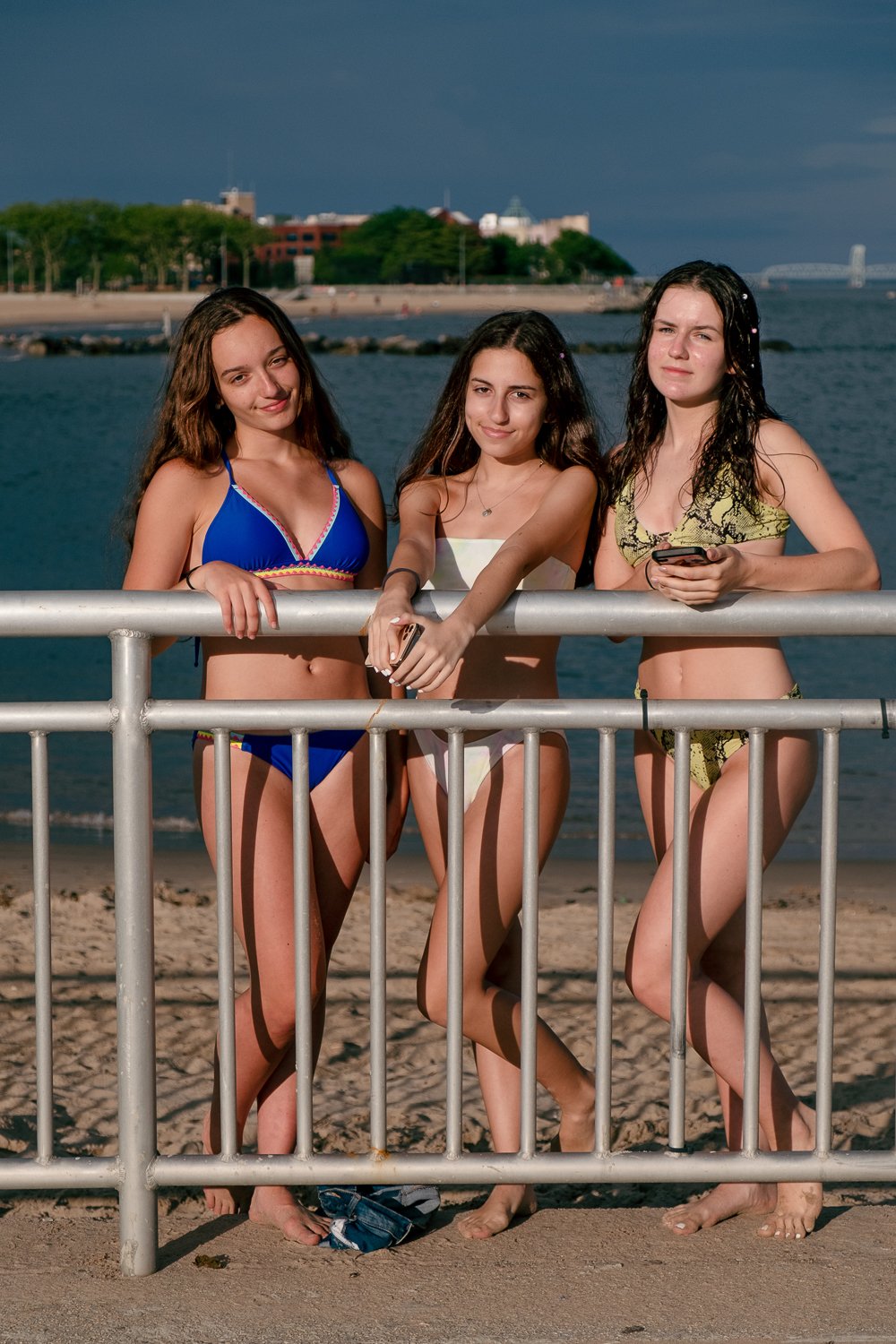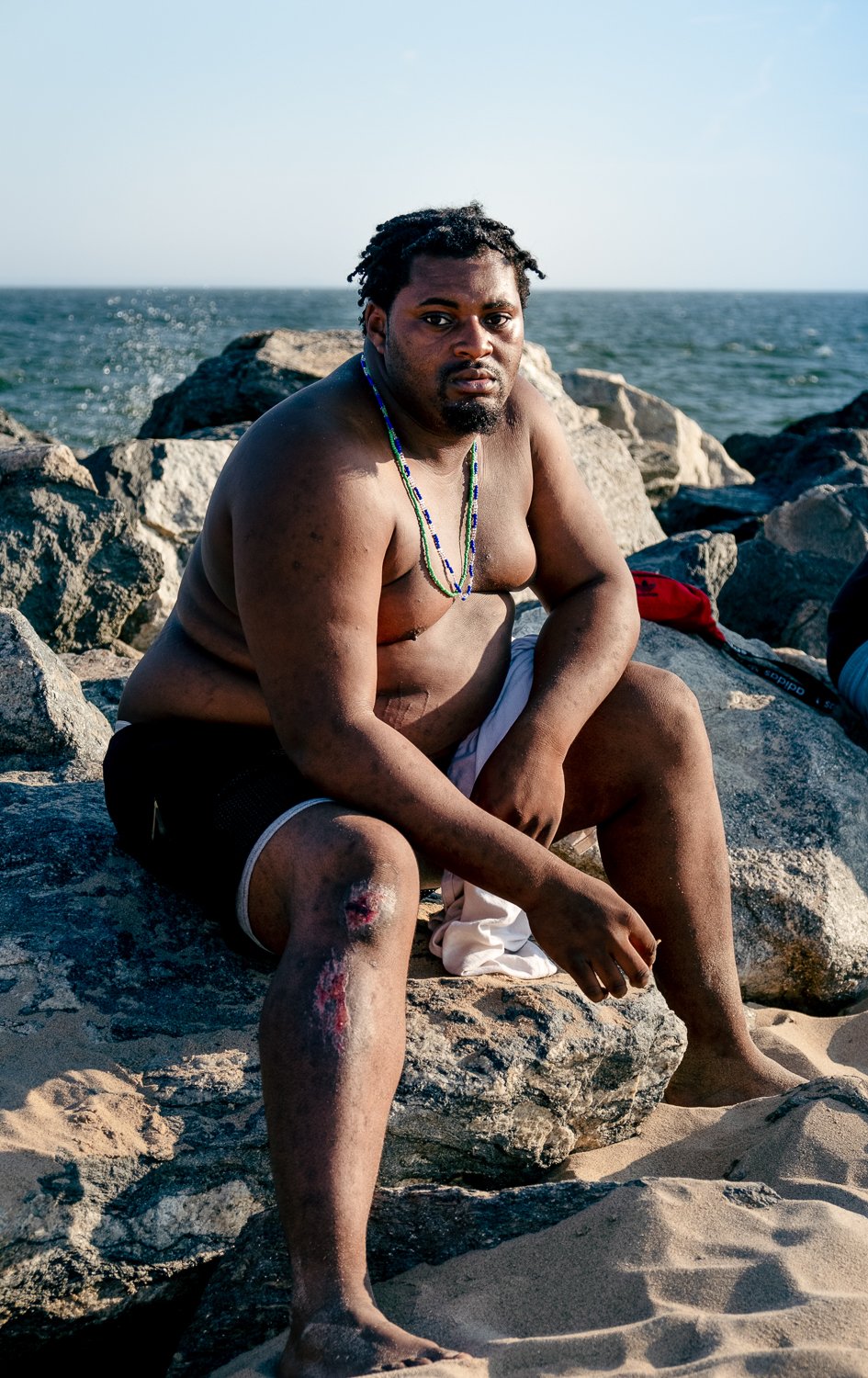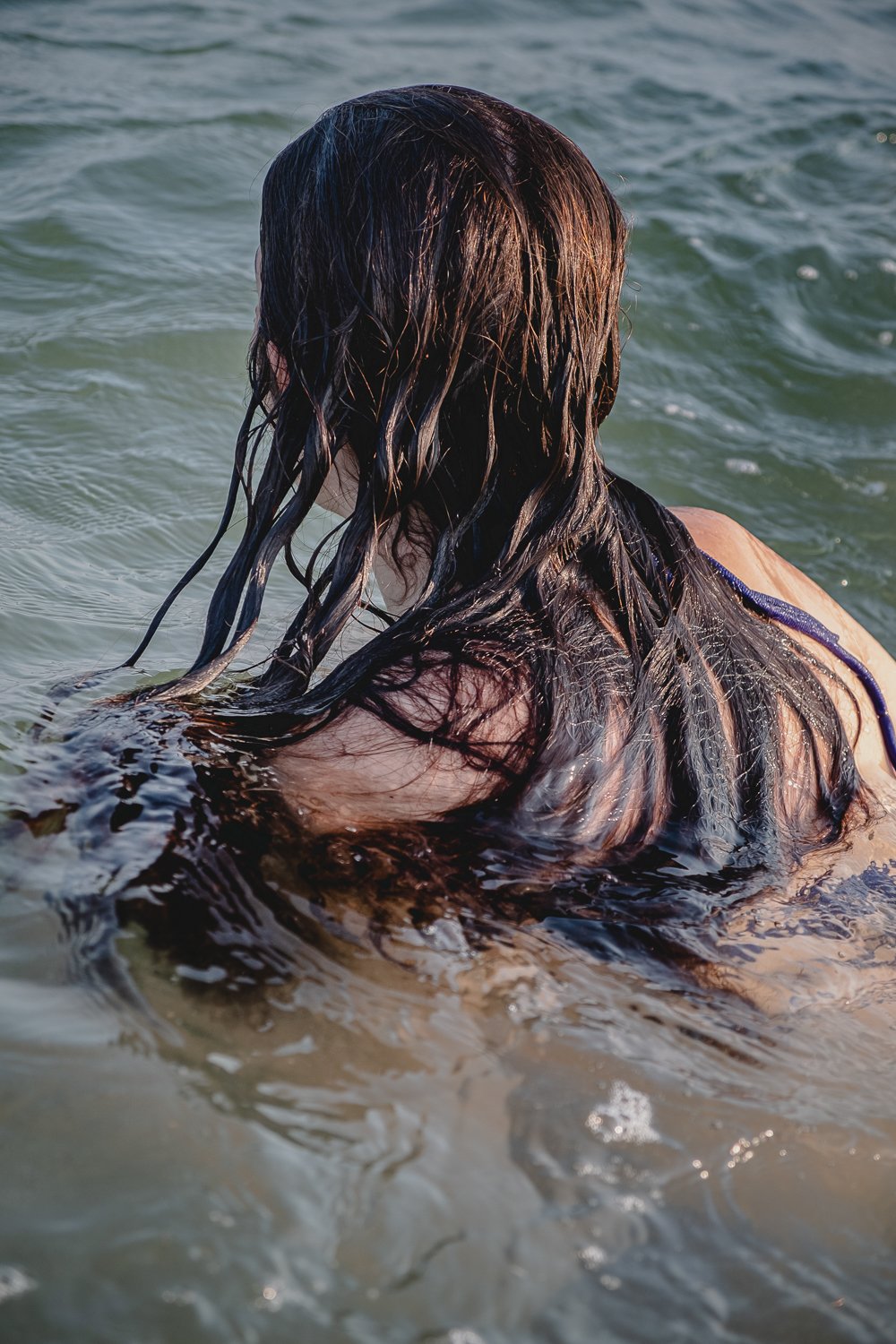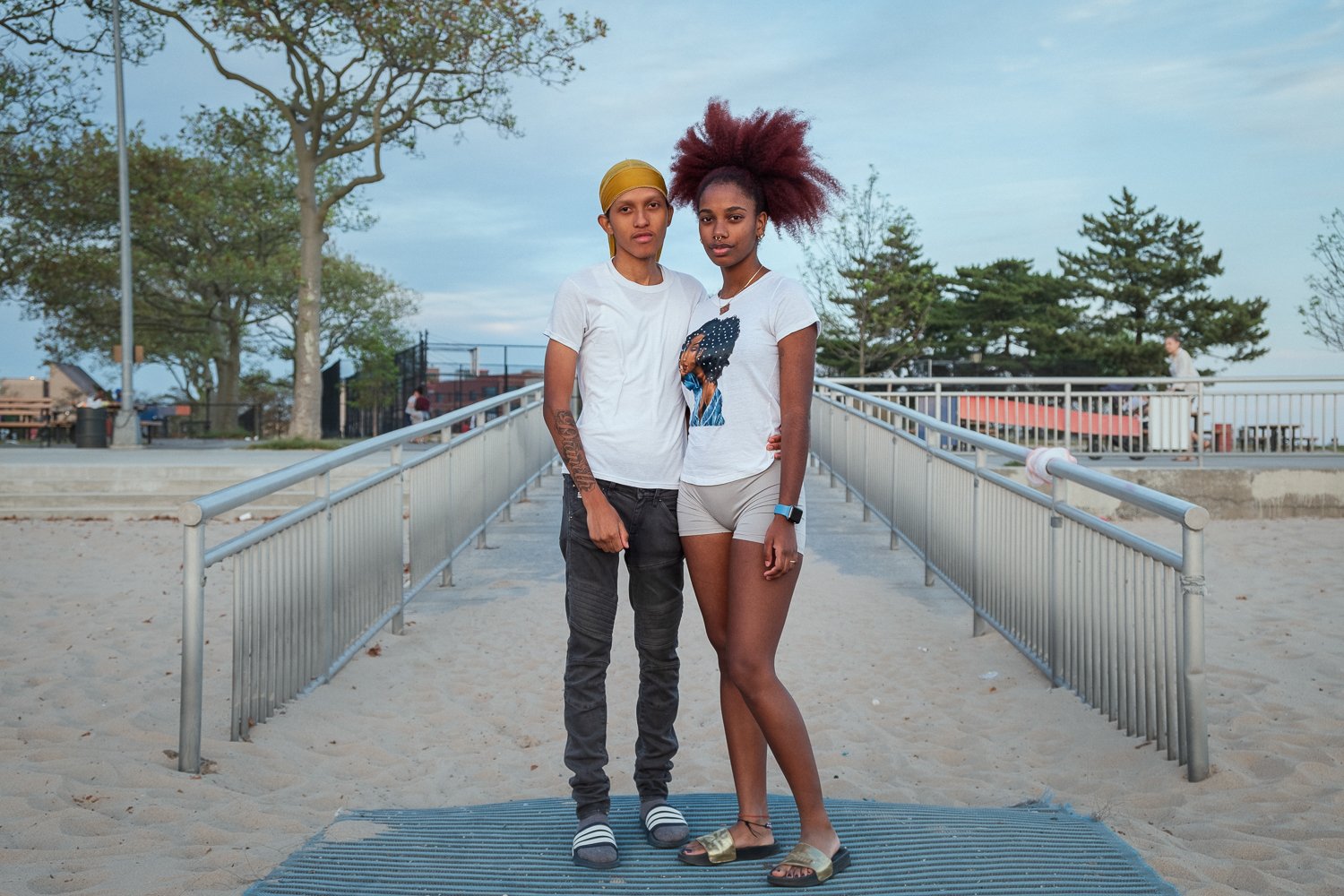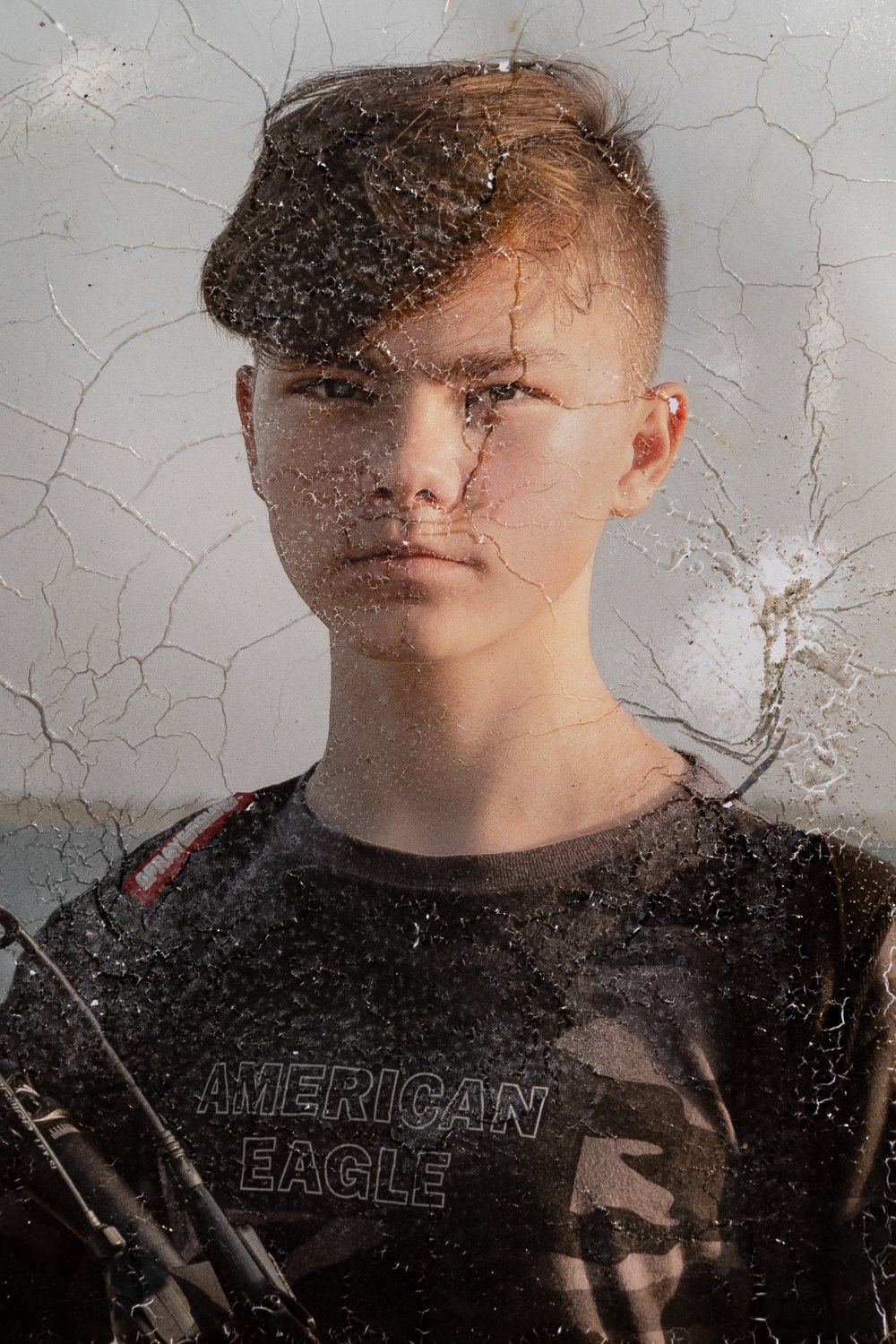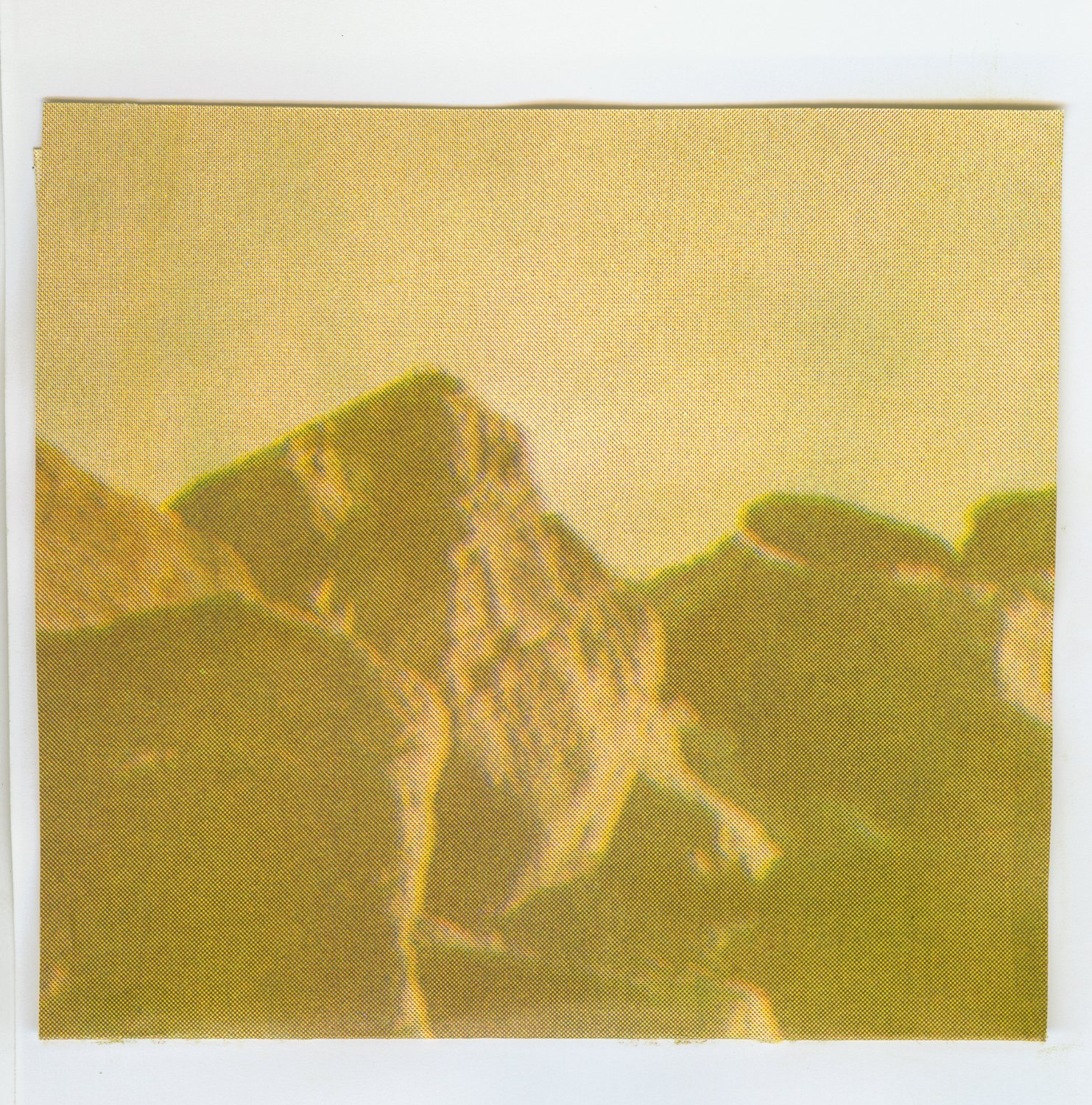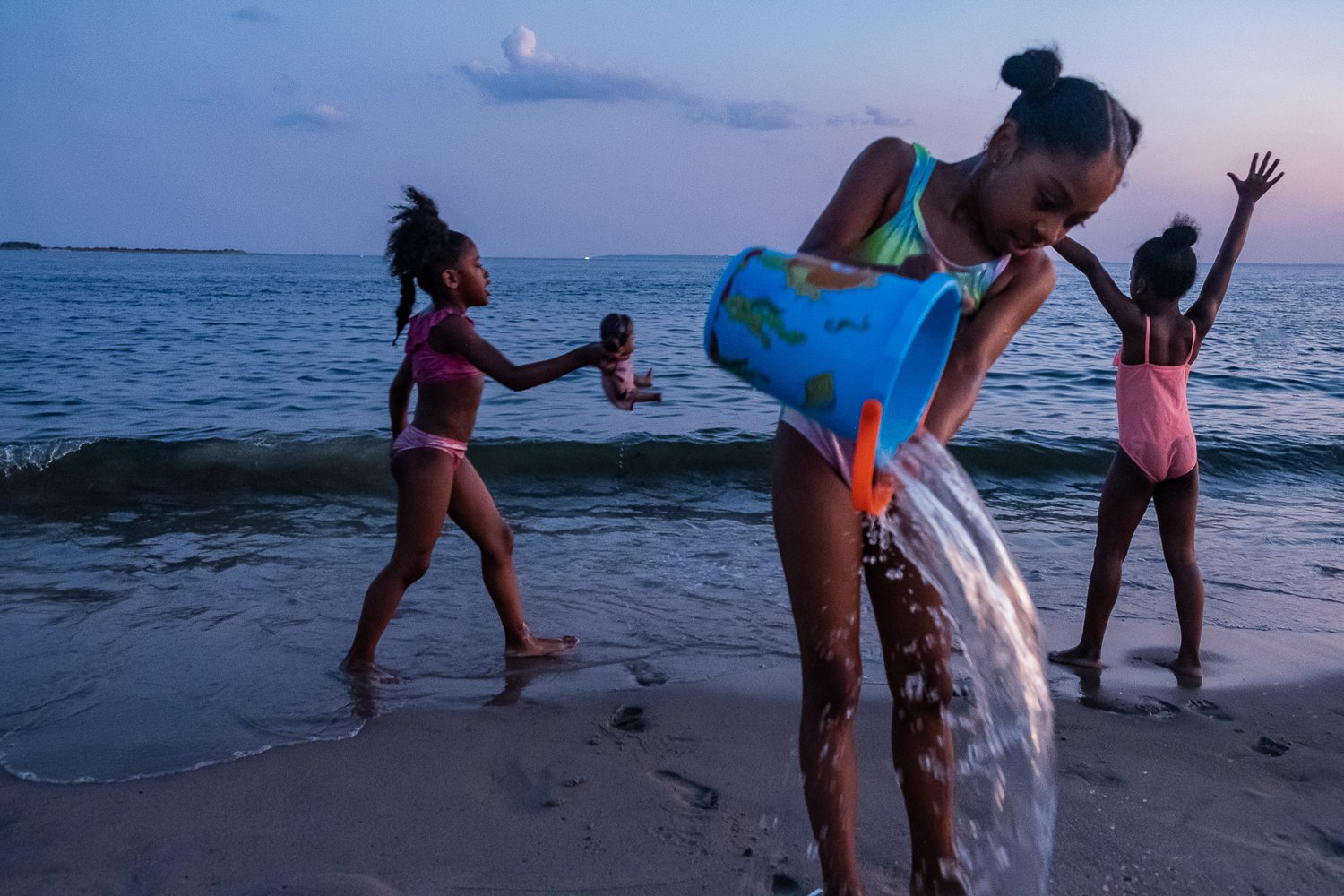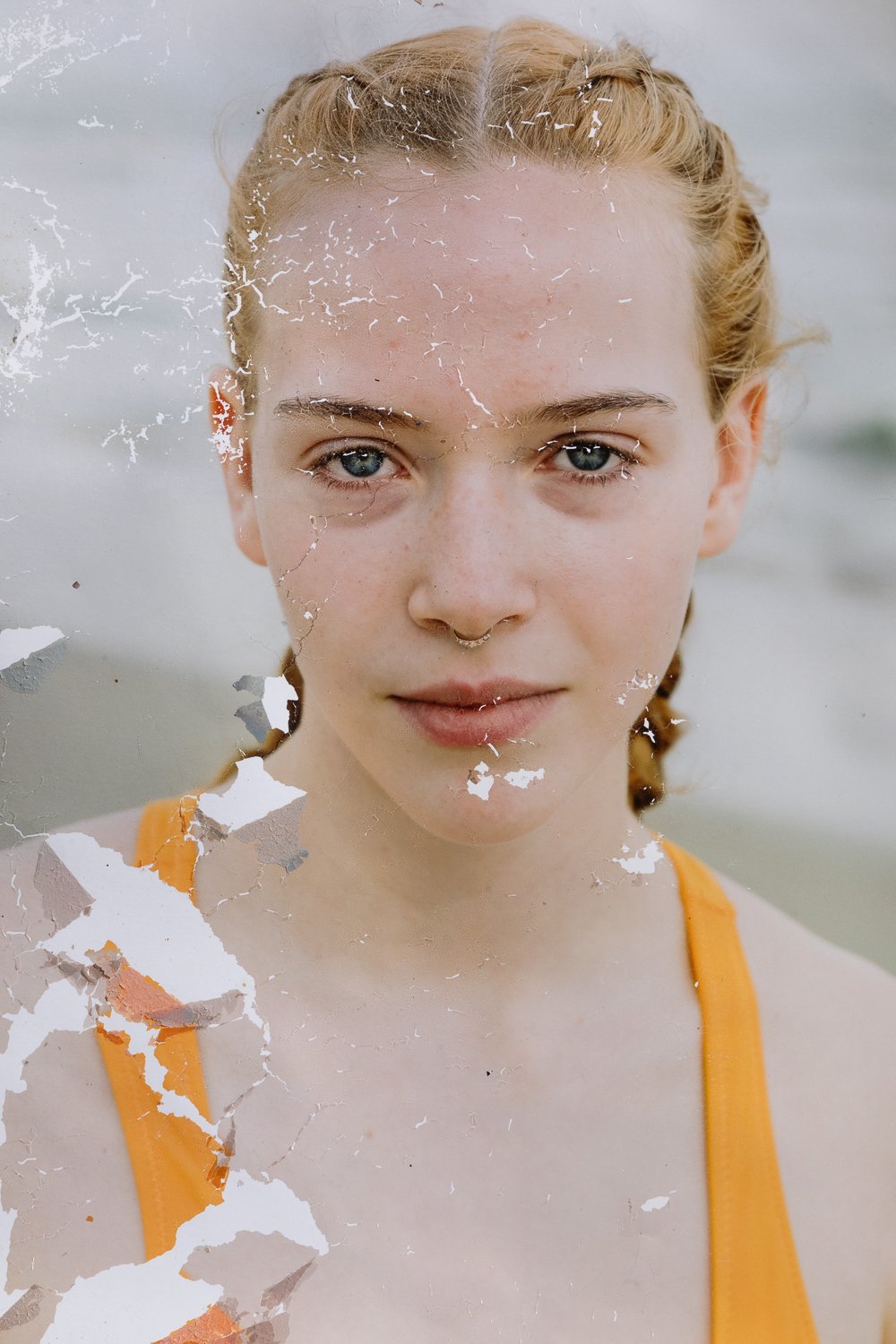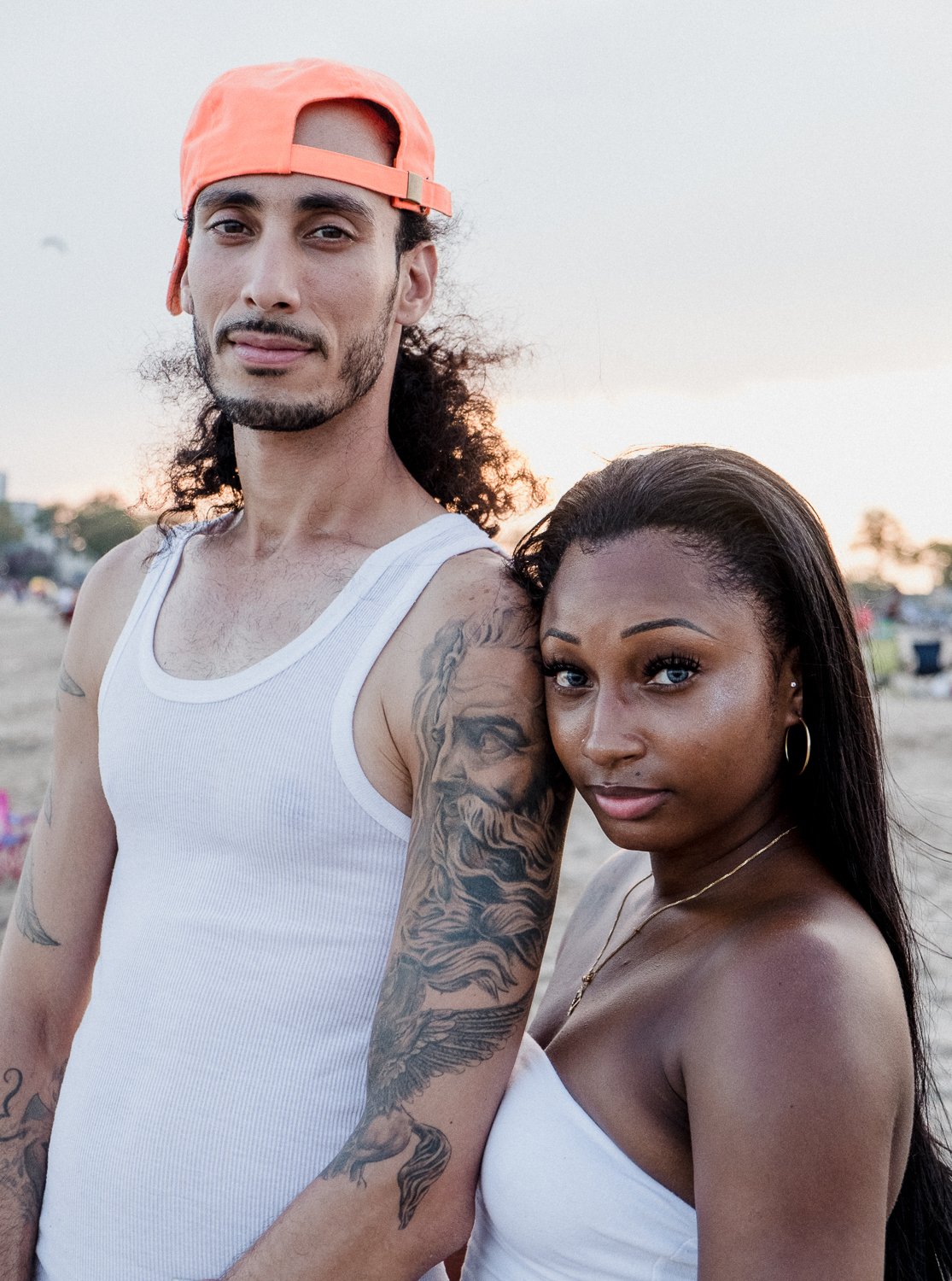I can smell the water
Unearthing a photo album that was in the flood of my home during Hurricane Sandy instigated my series, I can smell the water. When I saw these family photos for the first time, the black and white silver halide prints were brutally pressed against small plastic sleeves on detached metal spines. The photos were of my grandmother in Palestine just a few years after surviving the Holocaust. In the majority of the pictures, she is smiling on a beach. I was struck by how many generations of my family have been living by the sea, working with it, getting joy from it, defining ourselves by it -- even my last name Kahn means small boat in German. Later, I learned that the sea was also the place where most of her family was killed during the Liepaja massacre in 1941, as they were ordered to face the sea before their death. The sea has complexities for me and many who come from diasporic histories. It heals wounds of displacement, but not without the recollection of collective memory.
Now, after years of living by the water, my family is looking to move away from the volatile and unpredictable coast in an effort to skirt the negative impacts of climate change. I returned to the beach, almost like a swan song, to make portraits of adolescents at dusk. I considered my grandmother's survival as a teenage girl facing war and the looming hurdles the youth will face during the climate crisis. Ingrained in me is a sense that teens have a singular sense of bravery and resiliency, and just underneath is palpable vulnerability.
Years after Hurricane Sandy flooded my family archives, I returned to the ocean and collected its water, bringing it back to submerge my portraits in an act of acceptance of the power of the oceans, my eco-anxiety, and the fragility of the photograph. Through a controlled submerging of the photographs, I have released control--an act of preemptive grief.



